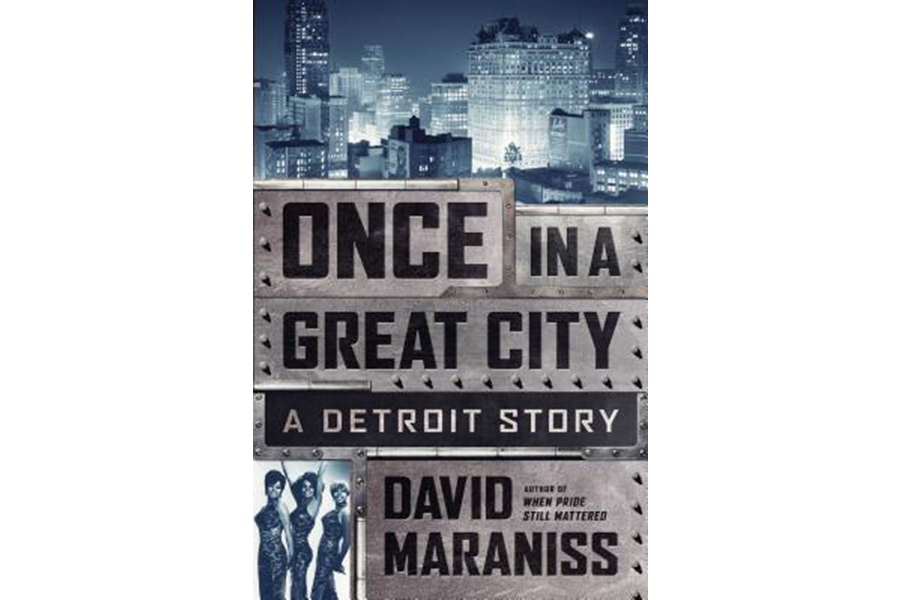'Once in a Great City' traces the rise and fall of Detroit
Loading...
Detroit has been gleefully held up as the ultimate example of American excess and arrogance come home to roost, its crumbling infrastructure acting a rusting backdrop to a financially and morally bankrupt city.
When conjuring up images of the Motor City in 2015, it's hard not to think about entire neighborhoods of abandoned homes, politicians being handcuffed for corruption, and auto executives with hat in hand being berated by congressional panels.
But in Once in a Great City: A Detroit Story author and journalist David Maraniss turns back the clock to paint the picture of an American metropolis in its prime, however, one where the seeds of the city’s future fall were already starting to take root.
It’s the early 1960s and Detroit manufacturing muscle rules the nation, churning out cars at a breakneck pace. Unemployment is low and auto executives are toasting to quarter after quarter of record-breaking profits.
Over the next few years detailed in the book, Martin Luther King Jr. will have early stirrings of his “I Have a Dream” speech in Detroit, industry will hum during a calm point in labor disputes, and Motown's Hitsville U.S.A. will turn a Motor City production process towards music.
On the other side of the coin, Detroit will put forward a failed Olympic bid, protests and demonstrations over police brutality will increase, and demographers will detect the first inklings of the population drain that will eventually drain the great city.
Maraniss’s recounting of the story of his birthplace has the distinct feeling of the first big drop of a roller coaster. A car chugging upward towards heady heights, but en route takes an inevitable plunge back into cold reality.
In a prescient foreshadowing of Detroit’s future, the book opens with the destruction of two buildings.
In Dearborn, the Ford Rotunda, a structure which symbolized the company’s forward-looking philosophy went up in smoke, coming with it a sense that "something was gone forever."
The same day, the Gotham Hotel, a focal point for the city’s thriving black upper class, was the subject of a raid which destroyed the landmark and illustrated that "some part of old Detroit was dying at the Gotham with every swing of the ax and blow from a sledgehammer."
Indeed, the oscillating stories of the auto industry and the civil rights struggle remain central focus points for the book. And as in any good tale, strong characters, with conflicting ambitions emerge as prominent figures in these pivotal few years in Detroit.
Maraniss is able to give these characters life by injecting them with foibles along with the force of personality that made them prominent figures in the building of the city.
Walter Reuther and Henry Ford II, the labor leader and the auto heir, are found circling each other in politics and business, their professional lives occasionally interrupted by their personal flaws. Ford’s weakness for a beautiful Italian countess and Reuther’s weakness for power, get in between them and their goals.
Through the eyes of C.L. Franklin, the father of Aretha (yes, that one), the bombastic preacher turned protest leader, one sees “the cause of civil rights, that mighty stream of righteousness.”
The simple breadth of the book is impressive, with Maraniss merging and wrangling disparate storylines about culture, politics, race, and the Ford Mustang into a single patchwork image of the Motor City.
Which is not to say the book is perfect. Writing a biography of Detroit means taking on the unenviable task of “capturing” an American city within the pages of a book, leading to some sections that are wordy and overladen with superfluous detail.
In a way, I wish Maraniss had taken a page out of Motown founder Berry Gordy Jr.’s repertoire, and opted for digestible bits of emotional heft, instead of long improvisational jazz that floats from one passage to another.
However, where the book shines is when these sections are punctuated by moments of intense clarity. For example in the treatment of the assassination of President John F. Kennedy, which seemed to symbolize a deeper loss that the city has never really healed from.
After Kennedy’s death, a few of the Motown musicians put their heads together to write “May What He Lived for Live,” in a tribute to the slain president.
But perhaps the most fitting requiem, a version of “(I'm Afraid) The Masquerade Is Over,” was sung by Marvin Gaye at Gordy’s birthday party a few days after Kennedy died, a celebration tinged with sadness that seems to mirror the state of the city in which it was sung.
“You look, you look the same, you're a lot the same. But my heart says, 'No, no, you're not the same' I'm afraid the masquerade is over. And so is love, and so is love,” Gaye crooned that night.









